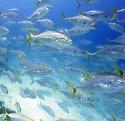We need to have it spelt out. Africa will be hit hard as the effects of climate change fall disproportionately on the world’s poorest people and countries. Camilla Toulmin’s book Climate Change in Africa surveys those effects and focuses on the adaptation measures needed to lessen the impact of what lies ahead. She endorses the notion that rich countries’ funding for adaptation in the least developed countries is not aid but compensation owing for the danger caused by those responsible for emissions. She also states early on that the choice of priorities is whether we will put our efforts into preserving the way of life of the rich, or addressing the urgent needs of the poor. But the book doesn’t dwell on ethics. Most of it is nuts and bolts analysis of what African countries will need to do to develop the resilience required to best manage the threats posed by global warming.
Toulmin acknowledges that there is some continuity between the development tasks already confronting African countries and the additional measures needed to cope with climate change. That doesn’t make the extra effort any less demanding. Indeed it is harder because it is required from communities already stretched for resources.
The effects of climate change are likely to vary greatly in the different regions of Africa. Water is a clear example. Some regions will suffer major shortfalls in water supply while others risk increased floods. Toulmin’s division of water into two categories – green (rainfall going into the soil and supporting plant life) and blue (rivers and aquifers) – provides a useful way of thinking about its availability. Her wide-ranging consideration of adaptation measures includes the more effective use of available water by investment in micro-level water supplies, and the need for agreement between countries on sharing large river basins.
In discussing how food production is likely to be affected Toulmin incidentally provides an interesting sketch of the great variety of food and farming systems in Africa. She points to the adaptability of African farmers over many generations, including the adoption of new crops and livestock. An example is the way simple improved soil and water conservation activities on the central plateau of Burkina Faso over the past 20 years have resulted in remarkable improvements in crop yields, tree cover, and rising groundwater tables, turning around the life of a declining area. But the vulnerability of farming to climate change is serious and the need to build more resilient systems is pressing.
Forests figure largely in much African life. The continent hosts 16% of the world’s forests, from the lowland forests of the Congo basin which is the second largest expanse of of rainforest in the world after the Amazon, to the forest land in the extensive drylands of the savannah and Sahel which cover approximately 40% of the continent. Deforestation is a serious issue and the point at which Africa’s contribution to atmospheric CO2 becomes significant. In the course of her discussion Toulmin makes a case for forest dwellers to have more say in the management of forests, arguing that their involvement in long-term management often has better results than that of the state alone. The importance of mechanisms post-Kyoto to compensate countries for avoided deforestation is discussed at some length, with acknowledgement of the complexities involved.
Africa, like the rest of the world, is experiencing a growth in urbanisation, often in the form of fragile informal squatter settlements. Toulmin lists many of the risks to cities from climate change, including heat waves, flooding, pollution and sea level rise. A mere half metre rise will drastically affect Alexandria, and settlements on the west coast and elsewhere are also vulnerable. She stresses the need for adaptation plans in the continent’s cities, while acknowledging that their responsibilities far outweigh their resources. Durban is one of the few cities to take adaptation seriously, and its measures are described.
Climate change may increase the likelihood of conflict in Africa, as basic human security is put at risk. Toulmin is cautious of ascribing particular conflicts such as Darfur to climate change, seeing the causes as complex, but she recognises that population movement driven by climate change may lead to land ownership disputes. The size of military budgets shows that lack of money is not the main problem in addressing security and she uges that the security agenda be reframed to focus on technical, institutional and economic measures to build resilience for the changes ahead.
Toulmin fears that in spite of all its problems Africa will be marginalised in the global carbon economy. It is hard for the countries of the continent to speak with one voice given their diverse set of interests and needs and consequently all too easy to leave them on the edge of the big global negotiations. Nor are the African poor as well represented by their governments as they should be, making it doubly difficult for their voices to be heard where global decisions are made.
This short but painstaking book packs in a good deal of patient explanation over a very wide range of issues. Sometimes one wonders whether there is any realistic way through the thicket of concerns about what climate change means for many African populations, particularly the poorest among them. But Toulmin maintains a steady focus on the policies required and how they can best be implemented. Such careful attention hopefully improves the chances that African peoples will receive some of the assistance they deserve in coping with what climate change threatens.
Afterword:
Shortly after writing this review I found myself watching a BBC programme about climate change refugees in Bangladesh who are thronging into the already overcrowded city of Dhaka. A different country, but horrifying evidence that the effects of global warming are already having a profound impact on the poor. Floods, storms and inundation from the sea are literally sweeping homes and livelihoods away. Some adaptation measures are being worked out in some villages, but others have no choice but to leave and live in the slums of the city, where again flooding is endemic and accompanying health problems overwhelming. The programme was a startling reminder that the measured words of the book I had just read were about real human lives and predicaments. These people bear little or no responsibility for global warming. It will be terrible dereliction if the developed world does not lend strong support to the adaptation effort which such countries must now attempt. On the mitigation front the urgency is made only more overwhelming by these early signs of what climate change is capable of doing to human society.

 Barack Obama is matching his words with action. Four days after his
Barack Obama is matching his words with action. Four days after his  A sidelight to Gareth’s
A sidelight to Gareth’s  Wind, solar and water sources are sufficient to provide the world’s energy by 2030. Scientific American has a front cover article coming up in November to demonstrate that. Written by
Wind, solar and water sources are sufficient to provide the world’s energy by 2030. Scientific American has a front cover article coming up in November to demonstrate that. Written by  Perhaps it will register if it’s expressed in money terms. The latest issue of the New Scientist carries an
Perhaps it will register if it’s expressed in money terms. The latest issue of the New Scientist carries an